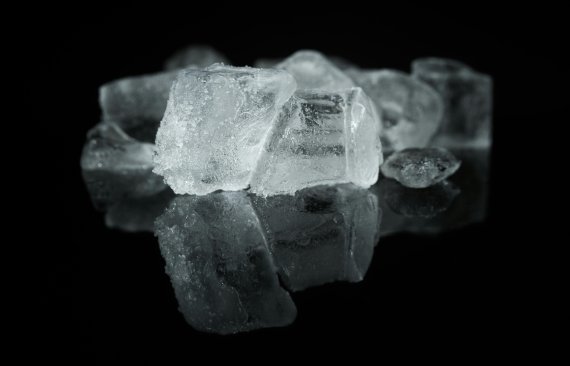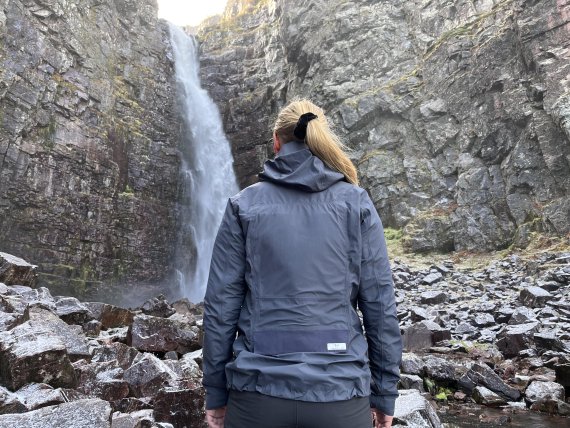The body actually already has a built-in self-cooling system: sweating is our natural mechanism for regulating body temperature and preventing overheating. If the body becomes too warm, for example due to high ambient temperatures or physical exertion, the brain activates the body's own cooling system and the body begins to sweat. As soon as the sweat reaches the skin, it evaporates and draws energy from the body in the form of heat. This evaporation process has a cooling effect and helps to keep the body temperature at a healthy level. In principle, it is therefore not a bad idea to wear as little clothing as possible when it is hot. But that doesn't always work. And too much sun is also bad for your health. In view of rising temperatures, the textile industry is therefore looking for solutions to ensure that clothing can reliably support the cooling effect. Because one thing is clear: the demand for cooling textiles will increase. Market forecasts predict annual growth of around eight percent by 2032.

brrr°, with this brand name you immediately know what it's all about, namely cooling. The US textile brand brrr° was founded just ten years ago and relies on the power of naturally cooling minerals, which are permanently integrated into the fabrics as micro-particles. These create a "triple chill effect" by immediately and continuously drawing heat and moisture away from the skin. "brrr° Pro intensifies the cooling sensation because our cooling micro-minerals have a larger surface area to draw heat and moisture away from the skin," says founder and CEO Mary-Cathryn Kolb, explaining brrr°'s technology.
As a result, brrr° nylon and brrr° polyester feel permanently cool and have a colder feel than other fabrics. They are also equipped with a technology that permanently wicks moisture away from the skin and ensures that it is quickly released into the air. And as a further feature, the material dries particularly quickly, leaving your skin feeling fresh and dry. brrr° has also proven these benefits in the laboratory. The company also holds several patents and continuously invests in research and development to develop the next generation of cooling textiles. These are set to become even more sustainable, for example through the use of recycled materials and natural fibers such as hemp.

37.5® Technology, based in Boulder, Colorado, has used particles of volcanic sand and activated carbon from coconuts to develop thermo-regulating fabrics for sportswear. The focus is not just on cooling, but on regulation. The fabrics can cool or warm as required to achieve a comfortable temperature of 37.5°C.
The fibers contain active particles made from coconut shells and volcanic sand, which attract moisture and then release it again using the body's own infrared energy. This provides cooling. The idea came to the inventor during a volcanic sand bath in Japan, where he was surprised by the pleasant temperature. The volcanic sand absorbs the infrared energy emitted by humans. This draws moisture from the skin before it condenses as sweat, which accelerates evaporation. Conversely, when it is cold outside, the particles retain the radiated body heat and keep the body warm. The company also uses yarns with recycled content and has equipped the fibers so that they biodegrade faster than conventional synthetic fibers, which can take hundreds of years to break down.
Incidentally, there are also fabric technologies in the far-infrared range. These are fibers that are impregnated with far-infrared emitting ceramic nanoparticles. These have a warming effect by improving blood circulation

Temperature-regulating phase change materials (PCM) from manufacturers such as Outlast or Schoeller Textiles were introduced to the world of sportswear many years ago as "intelligent" textiles. They were described as intelligent because these fabrics can proactively balance out temperature fluctuations, which makes particular sense in sports where high activity levels and cooling phases alternate quickly, such as skiing. However, these fabrics can also contribute to a greater sense of well-being in urban environments, where it is extremely hot outside and cold inside due to air conditioning.
And this is how they work: With Outlast Thermo technology, micro-encapsulated natural wax is applied as a coating to fabrics or incorporated into the fibers. As soon as the temperature rises - due to increased activity or sitting in the sun - the natural wax absorbs excess heat by liquefying. This literally stores it in the textile. Body heat therefore does not heat up your own microclimate any further, but instead causes the natural wax to melt. When the temperature drops, the wax solidifies again and the stored heat is released back into the body. In this way, PCMs act as a heat buffer that absorbs heat peaks and thus also reduces perspiration - by almost 50 percent according to Outlast. This means that the technology constantly balances the temperature to prevent overheating and cooling. Incidentally, this heat management is also used in space travel.

While the heating function in clothing has been known for some time and is already suitable for mass production thanks to ever smaller batteries, electrically powered cooling systems in clothing are still a complete novelty. The Swedish company LunaMicro has now taken the first step and developed a moisture management technology that also works with the help of electricity. The technology is based on a multi-layered, porous textile that is connected to a small battery. The textile is multi-layered because three additional thin textile layers are incorporated between the actual outer fabric and the lining: two electrodes and a nanoporous membrane in between. With the help of electro-osmosis, the small battery pumps moisture from the inside of the garment to the outside, thus achieving a cooling effect. The technology is based on patented research results from Linköping University in Sweden and has just won an award at the Techtextil fabric trade fair in Frankfurt.
We all know the trick: as soon as you put a wet cloth on your skin, it has a cooling effect. E.Cooline has made use of this principle and developed a technology that traps moisture in the fabric. It enables cooling evaporation without the textile having to feel wet. The technology is based on a high-tech fleece whose special 3D structure binds ten times its weight in water inside in a matter of seconds and stores it directly on the 3D fibers. This keeps you dry and, thanks to the enormous surface area, provides more effective and stronger evaporative cooling than other materials. Incidentally, you don't have to wait until you sweat to achieve cooling: you can simply wet the textiles quickly! Thanks to the 3D structure, the products are also lightweight and remain breathable.
- Awards
- Mountain sports
- Bike
- Fitness
- Health
- ISPO Munich
- Running
- Brands
- Sustainability
- Olympia
- OutDoor
- Promotion
- Sports Business
- Textrends
- Triathlon
- Water sports
- Winter sports
- eSports
- SportsTech
- OutDoor by ISPO
- Heroes
- Transformation
- Sport Fashion
- Urban Culture
- Challenges of a CEO
- Trade fairs
- Sports
- Find the Balance
- Product reviews
- Newsletter Exclusive Area
- Magazine








